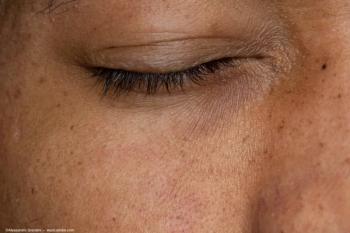
Study shows ceftriaxone found effective in treating congenital syphilis
Key Takeaways
- Ceftriaxone was found to be an effective alternative to penicillin for congenital syphilis, with similar ophthalmologic outcomes.
- A penicillin shortage from 2014 to 2016 led to the use of ceftriaxone in over half of congenital syphilis cases in Brazil.
Compared with penicillin, investigators reported no significant differences in the incidence of ophthalmologic manifestations among patients treated with ceftriaxone.
A study conducted in Brazil found that congenital syphilis can be treated effectively with the antibiotic ceftriaxone. Compared with penicillin, the standard therapy for treating syphilis, investigators reported no significant differences in the incidence of ophthalmologic manifestations among patients treated with ceftriaxone.1
The study was led by first author Samuel Montenegro Pereira, MD, from Center for Health Sciences, University of Fortaleza, Ceará, Brazil. The study findings were reported in the International Journal of Retina and Vitreous.
Pereira and colleagues explained that while penicillin is the long-time standard of treatment and prophylaxis for syphilis,2 39 countries, which included Brazil, experienced a shortage of penicillin from 2014 to 2016. This scenario forced the use of second-line therapies, ie, notably ceftriaxone, to treat more than half of the babies with congenital syphilis.3
Because congenital syphilis is associated with interstitial keratitis, chorioretinitis, uveitis, and optic atrophy, the exact incidence of ophthalmic complications associated with CS is uncertain.4
Among inadequately treated patients, the incidence of ophthalmic manifestations increases until puberty.5 Epidemiologic studies in children are scarce, but studies in adult patients with any type or stage of syphilis have found ocular manifestations in 0.53% to 2.6% of cases, but there is reasonable consensus that this figure is underestimated.4
In light of this, they conducted a retrospective cohort analysis to evaluate the ocular findings in children with congenital syphilis who were born in 2015 and treated with ceftriaxone during the period in which penicillin was in short supply.
A total of 469 children who were born with congenital syphilis were identified, and of those, 171 were approached to undergo an ophthalmologic assessment and retrospective analysis of their information recorded in their medical record, the authors recounted.
Results of the retrospective analysis
Of the patients invited, a total of 68 children (median age, 8 years; range 7–8 years) were available to be assessed. Of those, 48 had been treated with penicillin (70.5%) and 20 with ceftriaxone (29.5%). The demographics and perinatal characteristics of the two groups were similar.
“The majority of children had a completely normal ophthalmologic examination (67.6%). Regarding findings that are more associated with congenital syphilis, one child in the ceftriaxone group (5.0%) had optic atrophy in one eye, and one in the penicillin group (2.9%) had glaucomatous optic disc changes. No interstitial keratitis was found. There was no significant association between the child’s treatment and the prevalence of ophthalmologic findings (p = 0.663) or between the medication and a current reactive venereal disease research laboratory test (p = 1.000),” the investigators reported.
“In this limited cohort, no significant differences were observed in the incidence of ophthalmologic manifestations between children treated with penicillin and those treated with ceftriaxone for congenital syphilis after an 8-year follow-up period. These findings suggest that ceftriaxone may serve as an effective alternative for the prevention of CS and its associated ocular complications,” Pereira and colleagues concluded.
They also advised that randomized controlled trials should be conducted to compare standard penicillin-based regimens with ceftriaxone in the neonatal population with the goals of further assessing safety, therapeutic efficacy, and long-term outcomes in the prevention of complications associated with congenital syphilis.
References
Pereira SM, Araújo MAL, Lima RV, et al. Comparative evaluation of long-term ophthalmic sequelae following first versus second-line antibiotic treatment for congenital syphilis. Int J Retin Vitr. 2025;11:63.
https://doi.org/10.1186/s40942-025-00689-y Villarreal DD, Le J, Klausner JD. Congenital syphilis– comprehensive narrative review of alternative antibiotic treatment for use in neonates. Sex Transm Dis. 2024;15:775-779. doi: 10.1097/OLQ.0000000000002057.
Rocha AFB, Araújo MAL, Taylor MM, Kara EO, Broutet NJN. Treatment administered to newborns with congenital syphilis during a penicillin shortage in 2015, fortaleza, Brazil. BMC Pediatr. 2021;21:166. doi: 10.1186/s12887-021-02619-x.
Furtado JM, Simões M, Vasconcelos-Santos D, Oliver GF, Tyagi M, Nascimento H, et al. Ocular Syphilis Surv Ophthalmol. 2022;67:440–462.
Cole HN, Usilton LF, Moore JE. Late prenatal syphilis, with special reference to interstitial keratitis: its prevention and treatment. Arch Dermatol Syphilol. 1937;35:563–579.
https://doi.org/10.1001/archderm.1937.01470220003001 .
Newsletter
Don’t miss out—get Ophthalmology Times updates on the latest clinical advancements and expert interviews, straight to your inbox.


















































.png)


